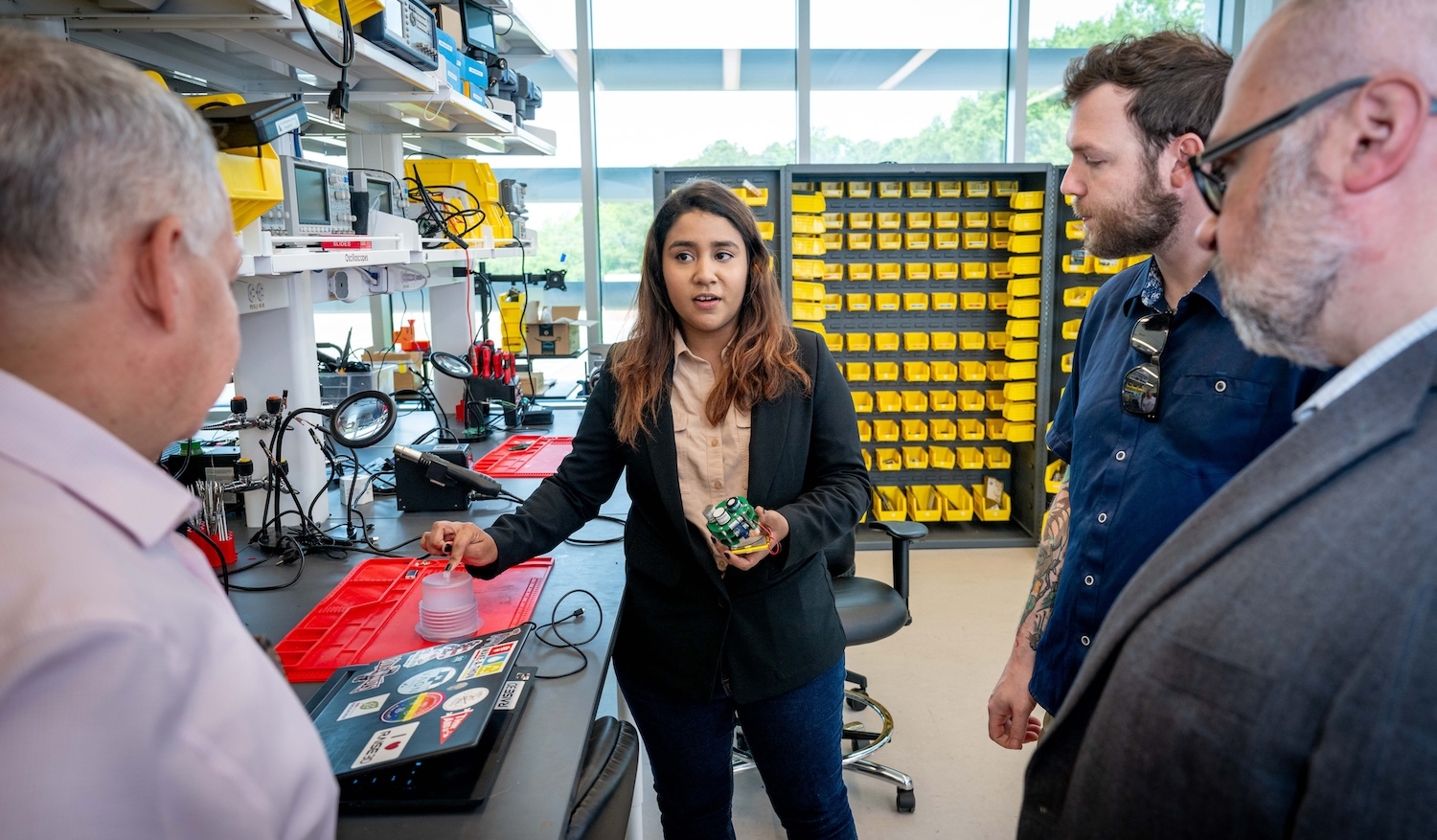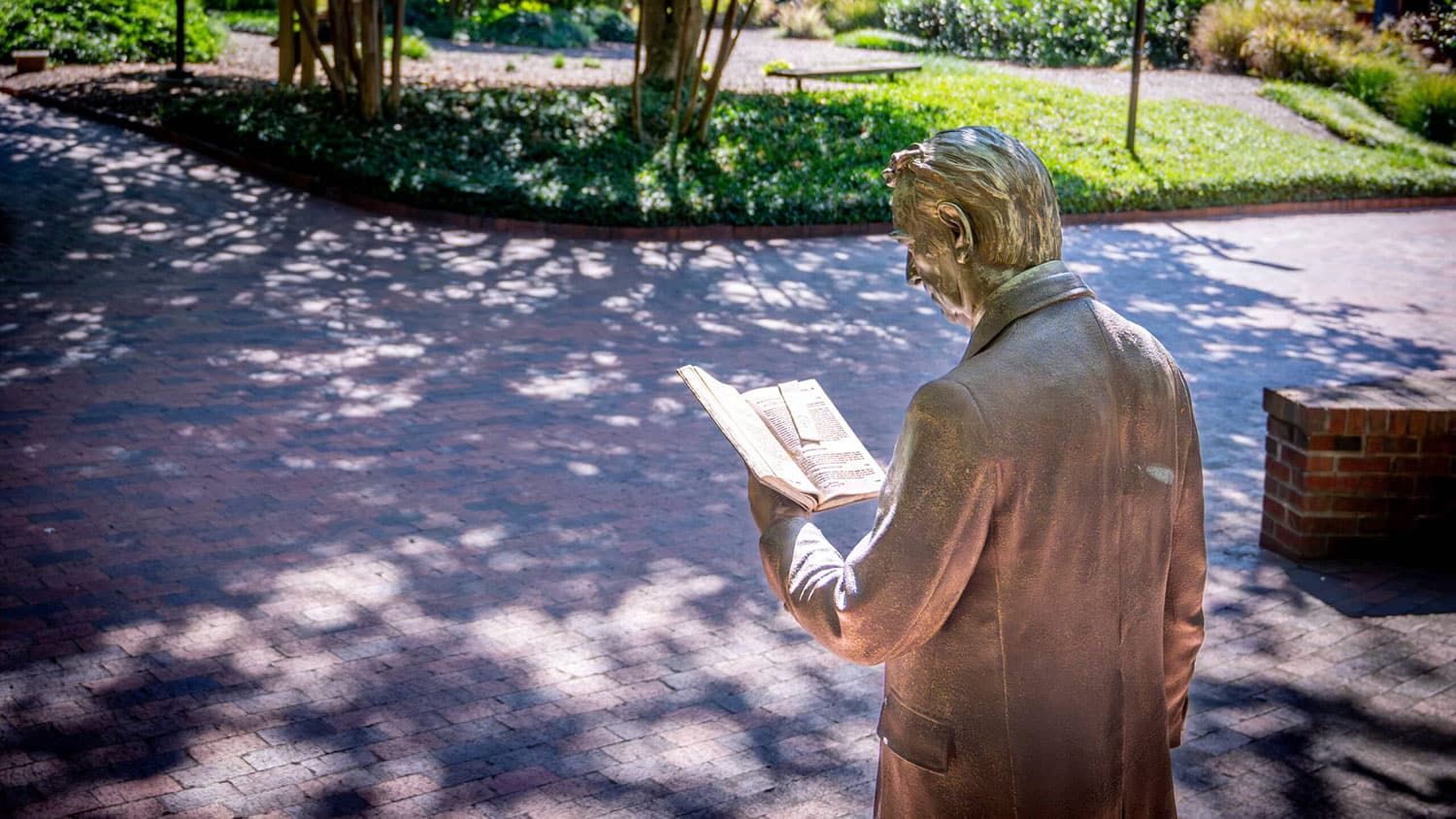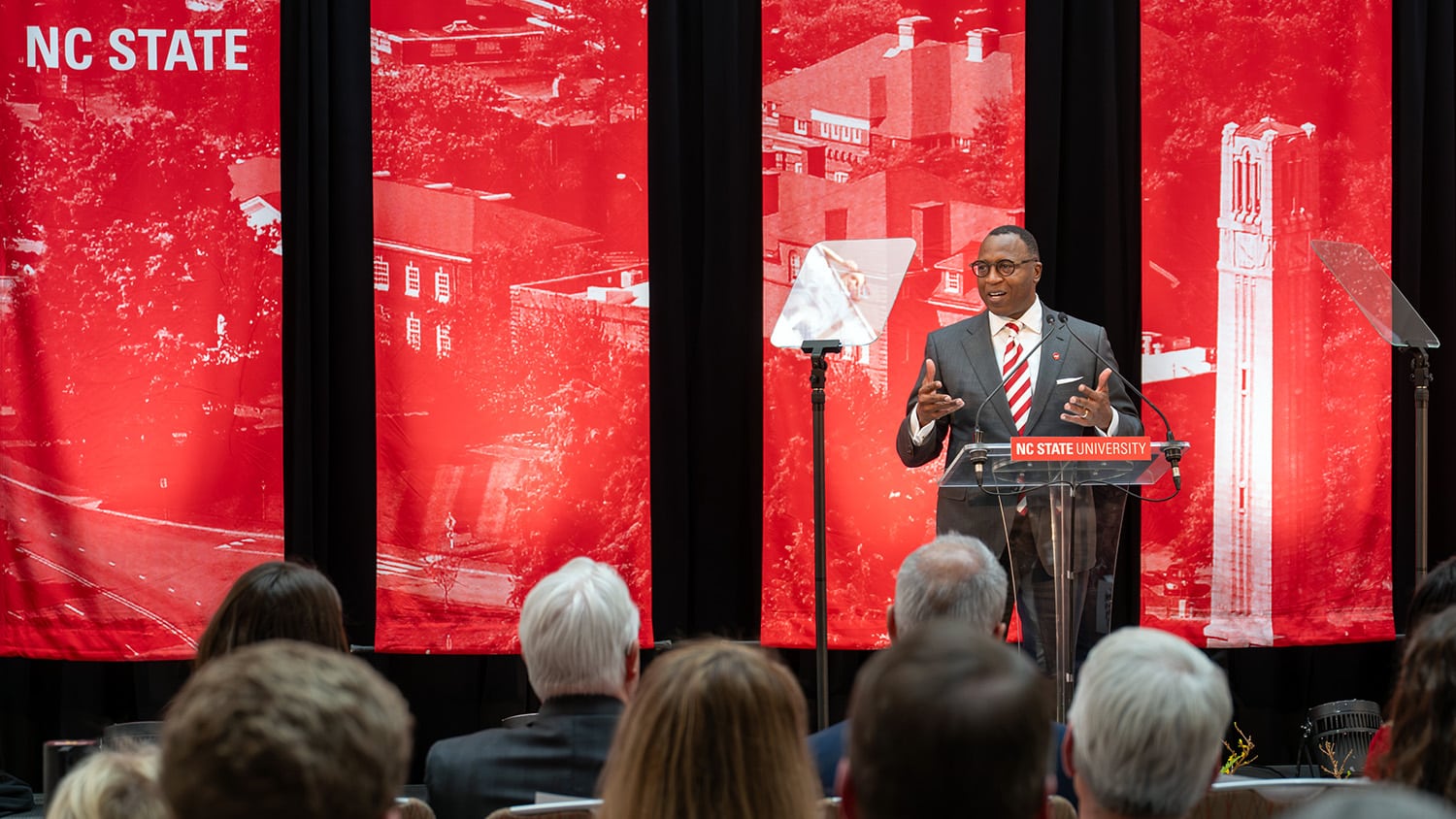Where do you go when you need parts for a robot that can walk through cucumber vines without getting tripped up as it monitors the air for disease spores? A machine that connects to computers and cameras to sort thousands of seeds carefully by size? Or a tractor-mounted device that can stake a field full of tomatoes automatically?
If you are a North Carolina State University scientist or engineer working on challenges related to agriculture, the university’s Plant Sciences Building has just the place: its 1,550-square-foot makerspace.
Little more than a year ago, the makerspace was an empty space in the building. Since then, under the leadership of Andrea Monteza Arauz, it’s become a popular resource for faculty members and students engaged in agricultural research.
Monteza, of the university’s Office of Research and Innovation, is a mechatronics engineer – one who works at the intersection of mechanical engineering and electronics. She serves as the makerspace’s director, supervising a team of four interns studying engineering and computer science.
Getting Started
To get the lab up and running, Monteza drew from her experience developing several makerspaces for educational institutions in Panama. That included the first university makerspace in her home country. She also drew on knowledge she gleaned from N.C. Plant Sciences Initiative scientists and engineers when she asked them about their needs for future research.
Her first tasks were to design the space; select its machinery, tools and hardware; and begin paving the way toward making it financially self-sustaining.
In Demand
Since April, when the makerspace began offering services, “the demand has been crazy,” Monteza said.
Today, the lab has three rooms outfitted with everything from screwdrivers and hardware to top-of-the-line tools, including a lathe, router, laser cutter and 3D printers.

“As far as 3D printing goes, we have advanced capabilities compared to what you would normally encounter in a makerspace. That’s because regular makerspaces are geared toward education, and we’re geared toward research,” she said.
The printers can produce materials designed to be used on biological materials such as skin and leaf surfaces, and they can create items from so-called exotic materials —carbon fiber, fiberglass, polycarbonate and more.
Interaction, Creativity Required
Some of the makerspace team’s work, including fixing broken machine parts and fabricating metal materials, can be rather routine. But other jobs require lots of interaction with researchers — and lots of creativity, Monteza said.
“As someone without a background in biology, it’s been important to me to communicate well with the researchers to understand their needs,” she said. “I always try to get the most amount of information I can from the researcher themselves and to learn from them, because they’re the expert. Then I can complement that with information from other sources.”
One of Monteza’s favorite projects has been working with a university startup company, Hoofprint Biome designing and building an electronic sensor that could be used to accurately monitor gasses in a cow’s rumen. The company is using the sensor in research into a probiotic that will increase feed digestibility and decrease cows’ emissions of methane, a greenhouse gas.
Other exciting projects with big implications for farmers are in the works, Monteza says. One of them involves an agrivoltaics project with Ricardo Hernandez, an associate professor of horticultural science who is affiliated with the N.C. Plant Sciences Initiative. Agrivoltaics is the use of land for simultaneous crop and energy production.
“We are basically trying to get a device that will allow us to use land for crops and energy production at the same time by filtering the wavelength of light from the sun that the plants get,” Monteza said. “We will only let the plants have the photosynthetic active radiation that they need for growing. All the additional radiation that comes from the sun will be trapped by solar panels that move as the sun moves.””
What’s Next
As she collaborates with plant sciences researchers to help them achieve their goals of increased agricultural productivity and sustainability, Monteza is also working to make the makerspace a service center — one that charges breakeven prices to sustain itself financially.
Doing so will enable the makerspace to maintain and improve its services, she said.
“In the future, I see this place adding even more advanced capabilities,” Monteza said. One example she cited: microfabrication equipment that will enable the makerspace to create tiny electronic features, down to the size of a bacterium.
“Here, we are getting to create things that are new — to create things from zero — just from your imagination,” Monteza said. “I don’t think as a mechatronics engineer you could go on a much more interesting path than this one.”
This post was originally published in Plant Sciences Initiative.
- Categories:



